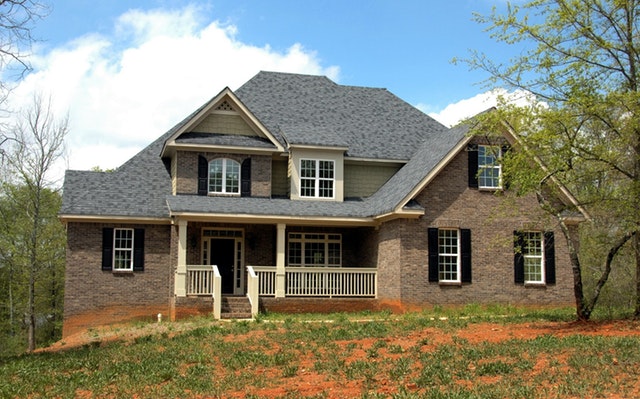What’s Ahead For Mortgage Rates This Week – September 23rd, 2019
 Last week’s economic reports included readings from the National Association of Home Builders on housing market conditions, Commerce Department reports on Housing starts and building permits issued and the National Association of Realtors® report on sales of previously owned homes.
Last week’s economic reports included readings from the National Association of Home Builders on housing market conditions, Commerce Department reports on Housing starts and building permits issued and the National Association of Realtors® report on sales of previously owned homes.
The Fed reduced its key interest rate and weekly reports on mortgage rates and first-time jobless claims were also released.
Builder Confidence in Housing Market Improves, Sales of Pre-Owned Homes Rise
The National Association of Home Builders Housing Market Index rose one point to an index reading of 68 in September. August’s reading was adjusted to 67 from an initial reading of 66. September’s reading matched the highest reading posted year-over-year.
Readings over 50 indicate that most builders are confident about housing markets. Analysts noted that builder confidence rose despite ongoing concerns about higher materials costs caused by trade wars and tariffs.
According to the Commerce Department, housing starts rose in August with 1.364 million starts on a seasonally-adjusted annual basis. Analysts expected 1.300 million starts and 1.215 million starts were posted for July. More housing starts are good news for housing markets stifled by short supplies of available homes and high demand for homes.
Building permits issued in August also rose from July’s reading. 1.419 million permits were issued as compared to July’s reading of 1.217 million permits issued on a seasonally-adjusted annual basis.
August sales of previously-owned homes rose to 5.49 million sales as compared to July’s annual sales pace of 5.42 million sales. Analysts predicted August sales of pre-owned homes to decrease to 5.39 million sales.
Mortgage Rates, Weekly Jobless Claims Rise
Freddie Mac reported higher mortgage rates last week with rates for 30-year fixed rate mortgages 17 basis points higher at an average of 3.73 percent. Rates averaged 3.21 percent for 15-year fixed rate mortgages and were 12 basis points higher.
The average rate for 5/1 adjustable rate mortgages was 13 basis points higher at 3.49 percent. First-time jobless claims rose last week to 208,000 claims. Analysts expected 215,000 new claims based on the prior week’s reading of 206,000 new jobless claims filed.
The Fed cut its benchmark short-term interest rate by one-quarter point to 1.75 to 2.00 percent, but there was some dissent among policymakers. Seven members of the Federal Open Market Committee voted for the rate decrease; two members voted against the rate cut and one member thought that rates should be cut 0.50 percent.
What’s Ahead
This week’s scheduled economic reports include readings on Case-Shiller Home Price Indices, inflation, pending home sales and consumer sentiment. Weekly readings on mortgage rates and first-time jobless claims will also be released.

 Crowdfunding came into prominence with the Jumpstart Our Business Startups (JOBS) Act that President Obama signed into law during 2012 and subsequent enhancements. The JOBS Act made it easier for startups to raise money and for the first time allowed the legal ability to advertise the investments and accept small investors.
Crowdfunding came into prominence with the Jumpstart Our Business Startups (JOBS) Act that President Obama signed into law during 2012 and subsequent enhancements. The JOBS Act made it easier for startups to raise money and for the first time allowed the legal ability to advertise the investments and accept small investors. The Federal Reserve’s Federal Open Market Committee reduced its key short-term interest rate range one-quarter percent to 1.75 to 2.00 percent during it’s September meeting. While FOMC members had mixed opinions on reducing the benchmark rate range for short term loans, the post-meeting statement suggested that reducing the federal funds rate was a hedge against inflation. The federal funds rate impacts short-term consumer loan rates for autos and adjustable rate mortgages, but does not impact fixed mortgage rates. FOMC monetary policy decisions are governed by the Federal Reserve’s dual mandate of maintaining price stability and an inflation rate of 2.00 percent.
The Federal Reserve’s Federal Open Market Committee reduced its key short-term interest rate range one-quarter percent to 1.75 to 2.00 percent during it’s September meeting. While FOMC members had mixed opinions on reducing the benchmark rate range for short term loans, the post-meeting statement suggested that reducing the federal funds rate was a hedge against inflation. The federal funds rate impacts short-term consumer loan rates for autos and adjustable rate mortgages, but does not impact fixed mortgage rates. FOMC monetary policy decisions are governed by the Federal Reserve’s dual mandate of maintaining price stability and an inflation rate of 2.00 percent. The National Association of Home Builders Housing Market Index shows steady builder confidence in housing market conditions. September’s index reading of 68 was one point higher than August’s reading. Any reading over 50 indicates that most home builders surveyed view housing market conditions as favorable. August’s original index reading was adjusted upward by one point.
The National Association of Home Builders Housing Market Index shows steady builder confidence in housing market conditions. September’s index reading of 68 was one point higher than August’s reading. Any reading over 50 indicates that most home builders surveyed view housing market conditions as favorable. August’s original index reading was adjusted upward by one point. modestly priced. The demand for smaller, less expensive homes is growing, while the overall demand for new custom homes is declining. Prices decreased slightly, by about one-half percent, from the price levels in 2018 for newly-constructed homes.
modestly priced. The demand for smaller, less expensive homes is growing, while the overall demand for new custom homes is declining. Prices decreased slightly, by about one-half percent, from the price levels in 2018 for newly-constructed homes.